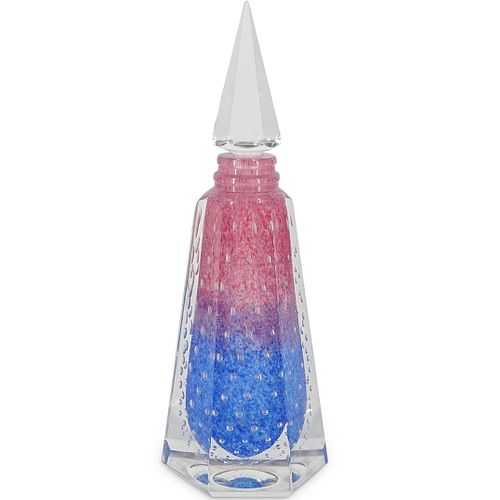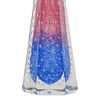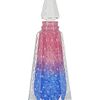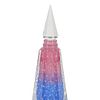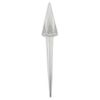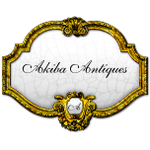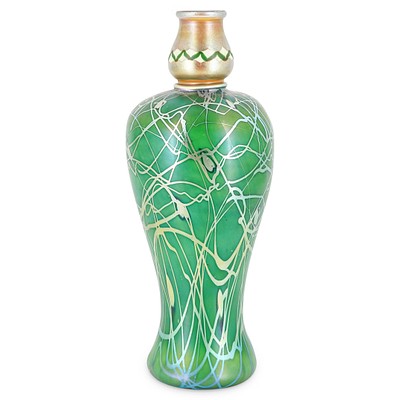Rare Steuben Cintra Paperweight Style Cologne Bottle
Lot 4
About Seller
Akiba Antiques
3 N Federal Hwy
Dania Beach, FL 33004
United States
Akiba Antiques, founded by Charles and Franceska Akiba in the 1980’s in Paris, France started by buying and selling fine arts. Franceska specialized in French furniture from the fine Napoleonic Era to La Belle Epoque, to Art Nouveau and Art Deco; While Charles’ expertise lied in European paintings b...Read more
Categories
Estimate:
$2,000 - $8,000
Absentee vs Live bid
Two ways to bid:
- Leave a max absentee bid and the platform will bid on your behalf up to your maximum bid during the live auction.
- Bid live during the auction and your bids will be submitted real-time to the auctioneer.
Bid Increments
| Price | Bid Increment |
|---|---|
| $0 | $20 |
| $500 | $50 |
| $1,000 | $100 |
| $2,000 | $250 |
| $5,000 | $500 |
| $10,000 | $1,000 |
| $25,000 | $2,500 |
| $50,000 | $5,000 |
| $100,000 | $10,000 |
| $250,000 | $25,000 |
About Auction
By Akiba Antiques
Dec 16, 2021
Set Reminder
2021-12-16 12:00:00
2021-12-16 12:00:00
America/New_York
Bidsquare
Bidsquare : The Fabulous Collection of Mr. & Mrs. Schultz
https://www.bidsquare.com/auctions/akiba-antiques/the-fabulous-collection-of-mr-mrs-schultz-7923
Rare Steuben Glass, European Antiques, and Fine Art. Akiba Antiques info@akibaantiques.com
Rare Steuben Glass, European Antiques, and Fine Art. Akiba Antiques info@akibaantiques.com
- Lot Description
DESCRIPTION: Steuben faceted crystal paperweight style cologne bottle with pink to blue shaded controlled Cintra internal decoration and controlled bubbles. c. 1927-31. Factory records call this a tall cologne originally retailed at $37.50. Clear cased, deep cut lead glass with bubbles with clear stopper. Shape 6687 p. 242 Paul V. Gardner book. Provenance: Purchased From Joan Miller in 1998 Reference: Pictured p. 58 of Objects of Desire: The Art of Frederick Carder by Alan Shovers. Shown on the cover of Vanity Vessels: The Story of the American Perfume Bottle by Gay LeCleire Taylor in a publication produced by the Museum of American Glass at Wheaton Village in Millville, NJ for an exhibit held on April 10 through October 24, 1999. At p. 6 the author states: No two designs better illustrate the new Deco trends than the Cintra cologne bottles made by the Steuben Glass Works (cover:3) and Ruba Rombic. Shown in 1932 Steuben Catalogue at plate V. See, p. 315 in The Glass of Frederick Carder by Paul V. Gardner. Shape in Cluthra Shown on Fig. 6.34 p. 147 of Frederick Carder and Steuben Glass by Thomas P. Dimitroff. In figure 6.11 p. 140 the author states: Paperweight cologne is the term collectors have applied to these heavy bottles. It was not a term officially used at the time of production. They are also sometimes referred to as Cintra colognes, although many actually have a core of Cluthra glass rather than Cintra. Color combination Shown on Plate XVII, A shown in The Glass of Frederick Carder by Paul V. Gardner. The description states: The heavy crystal casing encloses controlled bubbles. Color combination shown in a full page plate in a different shape at p. 54 of Steuben Glass An American Tradition in Crystal by Mary Jean Madigan. Color combination also seen in Paper-Weight bottles in The Fieldstone Porch Presents Creations by Carder of Steuben His American Art Glass. In plate Number 45 of Collector's Choice Review on a paperweight cologne the author states: Despite his acknowledge disdain for the Art Deco style, Frederick Carder was fully aware of this trend and did indeed produce some forms and decoration in this style (Venetian). Outstanding among them, and in marked contrast to his delicate Venetian-style glass, was a series of massive, boldly cut cologne bottles more sculptural than utilitarian usually referred to today by collectors as Paperweight Colognes (Gardner line drawings 6687, 6707-8, 6712, 6916-7, 6941-2, 6944-45. His inspiration for these pieces was most likely the massive individual pieces created by Maurice Marinot as one of Europe's most outstanding glass makers. Each example of Carders massive colognes made of brilliant colorless lead glass incorporates different colors, ranging from light green to deep brilliant blue often accompanied by irregular bubbly glass like Cintra(as found in some Marinot pieces) or by a controlled pattern of bubbles formed of air traps. Other colored glasses are enclosed with mica flecks and patterns of opaque white cane. All are enhanced by the broad, bold cutting that defines each final form. The massive cologne bottle shown here is expressive of Carders ability to adapt techniques inspired by the work of other artists and glass makers to create a new, distinctive form and type of decoration by imaginatively combining these various elements in an unusual and distinctive manner. These sculptured colognes are outstanding examples of American glass in the Art Deco style. Color combination Shown on p. 51 of Steuben Seventy Years of American Glassmaking by Perrot, Gardner, Plaut. At p. 54, The vibrant pinks and blues in the Cintra glass center of this massive cologne bottle are partially veiled by the network of controlled bubbles and enhanced by the depth of the crystal casing. Broad panel and facet cuttings on the outer surface create a prismatic illusion which is heightened by a kaleidoscopic play of colors as the piece is viewed from various angles. Very few of these bottles were produced, all differ in form, the color of the Cintra core, the pattern of the included bubbles, and type of surface cutting. This piece is probably unique. In The Complete Cut and Engraved Glass of Corning by Estelle F. Sinclaire and Jane Shadel Spillman 198, the authors state: Cutting-as-shaping distinguishes a group of paper-weight cologne bottles and vases made in the 1920s. Though enclosed color gives them much of their charm, deep channel cuts add a new drama to their shapes. At fig. 549, p. 194 a cut paperweight cologne is shown. CIRCA: 1927-1931 ORIGIN: USA DIMENSIONS: L: 3.5” W: 3.75" H: 10.75". Have a similar item to sell? Contact: Info@Akibaantiques.com. CONDITION: Tip of stopper has light shaving.. See lot description for details on item condition. More detailed condition requests can be obtained via email (info@akibaantiques.com) or SMS(305)-332-9274. Any condition statement given, as a courtesy to a client, is only an opinion and should not be treated as a statement of fact. Akiba Antiques shall have no responsibility for any error or omission.
- Shipping Info
-
For shipping please contact our 3rd party shipper: UPS STORE 954 4541131 auctions1937@gmail.com Contact Name:David
-
- Payment & Auction Policies
-
Available payment options
Thank you and congratulations on your new purchase!
-
-
- Buyer's Premium



 EUR
EUR CAD
CAD AUD
AUD GBP
GBP MXN
MXN HKD
HKD CNY
CNY MYR
MYR SEK
SEK SGD
SGD CHF
CHF THB
THB